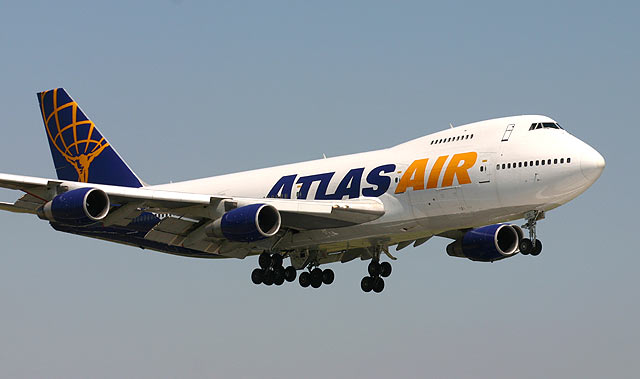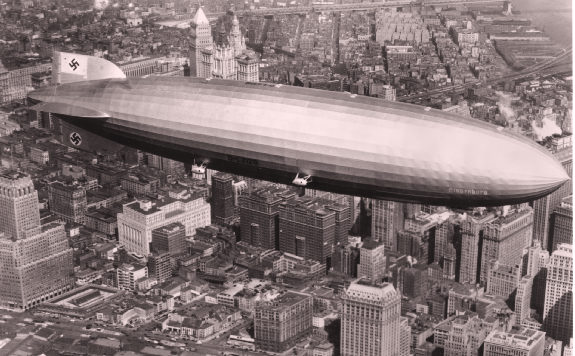Comparing a Boeing 747 with the Hindenburg
Time for a humorous, yet possibly interesting idea...
My colleague and I were discussing zeppelins the other day, and for some reason or other the idea came to us to build a new zeppelin and start exploiting it commercially. In order to be successful, we would of course need to become a strong competitor to one of the most popular machines of the sky: the Boeing 747.
After some quick searches on Google and Wikipedia, we found that the Boeing 747-100 has an empty weight of 162,5 tons, with a maximum takeoff weight of 333,4 tons, giving us a total lift capacity of 170,9 tons. Inside the 747, there is also room for 366 passengers (in a 3-class aircraft) or 452 passengers (in a 2-class aircraft), already included in the total lift capacity of the plane.
The Boeing 747-100

The Hindenburg class zeppelin on the other hand has a lift capacity of 10 tons, and has a crew/passenger capacity of 90 people, not included in the lift capacity.
As the world is slowly becoming more and more obese, we decided to keep things simple and estimate the average person's weight at 100 kg per person. That would mean that the total lift capacity of the Hindenburg class zeppelin equals 19 tons. If we want to better the Boeing, we need our new zeppelin to be able to lift the same amount as the original 747, so our zeppelin would need to be 8,99 times bigger that the Hindenburg (170,9 tons / 19 tons). Averaged out this would mean increasing the size of the original with a factor of 9.
Basically what we're about to build is a zeppelin type airplane which is 2196 meters long, has a diameter of 370,8 and is filled with 1.800.000 mü of helium.
The LZ129 Hindenburg

Fortunately for us, since everything will be increased nine-fold, this also results in a nine-fold increase in the original powerplant. The original Hindenburg had 4 Daimler-Benz 16-cylinder diesels, each delivering a whopping 985 hp capable of thrusting the huge blimp forward with a top speed of 131 km/h. Details aside, this would mean a top speed of 1179 km/h for our newest creation - which beats the measly 955 km/h top speed of the poor Boeing 747.
We haven't quite reached the nitty-gritty level of details yet, but there's no doubt in our minds that any decent bank would invest in our plan without further ado.
By this time next year, we'll be millionaires! (now where have we heard that one before?)
PS: this article was only written in jest - we are aware that there are some laws of physics out there, and we're not insane. Well, not *that* insane.
Source for the Hindenburg picture: Baseball Crank History: The Hindenburg.
Source for the Boeing 747 picture: De vliegtuig homepage.